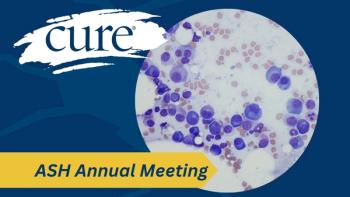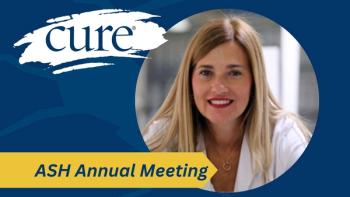
Multiple Myeloma
Understanding multiple myeloma.
Multiple myeloma is a relatively uncommon cancer, affecting one in 132 people.
Because of progress in its treatment, many patients can live with myeloma as they would a chronic disease, treating it with medicine over a number of years.
WHAT IS MULTIPLE MYELOMA?
Multiple myeloma develops when plasma cells grow out of control with the capacity to spread and sometimes become resistant to treatments. Plasma cells, a type of blood cell, are found in bone marrow (the soft inside part of bones) and are part of the immune system. These cells start out as lymphocytes, including B cells that mature into antibody-producing plasma cells when they fight an infection.
When these cells grow out of control, they produce an abnormal protein known as monoclonal protein, or M protein. The same protein is also known as monoclonal immunoglobulin, M spike or paraprotein. This is the hallmark of multiple myeloma.
The uncontrolled growth of myeloma cells crowds other blood-forming cells out of bone marrow, leading to low blood counts and a decreased ability to fight certain infections. It can also interfere with cells that keep bones strong. M protein can circulate in the blood and lead to damage of organs, including the kidney and nerve cells.
WHAT ARE THE RISK FACTORS FOR MULTIPLE MYELOMA?
Being older is a risk factor for myeloma; the average age at diagnosis is 69. Being male, being obese and being African American are also more frequently associated with myeloma. A family history of the disease slightly raises risk, but most people who get myeloma do not have relatives with the disease.
Having other plasma cell diseases such as monoclonal gammopathy of undetermined significance, which is considered a precursor to myeloma, also raises risk.
WHAT ARE THE SYMPTOMS OF MULTIPLE MYELOMA?
Myeloma often causes no symptoms until it reaches advanced stages, or it might cause vague symptoms that can be confused with those generated by other conditions. Sometimes patients receive a diagnosis when a routine blood test shows an abnormally high level of M protein.
Those who experience symptoms might have bone pain, weakness or breaks; low blood counts that cause anemia or excessive bleeding; high calcium levels that cause extreme thirst; sudden severe back pain or leg weakness due to broken bones in the spine; numbness or tingling in the extremities; thick blood that can cause confusion or dizziness; shortness of breath, weakness or leg swelling due to kidney damage; or infections such as pneumonia.
HOW IS MULTIPLE MYELOMA DIAGNOSED AND STAGED?
Doctors who suspect myeloma will conduct a series of blood and urine tests to check blood counts and kidney function as well as protein, calcium and antibody levels.
If these numbers suggest that myeloma is present, doc- tors will take a bone marrow biopsy. This can be done by sticking a needle into the back of the pelvic bone and taking out a core — about the size of the tip of a lead pencil— that contains a small amount of marrow. This allows a pathologist to look for myeloma cells.
An X-ray, MRI, CT or positron emission tomography scan can sometimes show bone changes or destruction caused by myeloma.
An echocardiogram might be used to check heart function, which can be affected by myeloma.
To diagnose myeloma, a doctor must find malignant plasma cells or 10% plasma cells in the bone marrow and at least one of the following: high blood calcium level, poor kidney function, anemia, holes or lesions in the bones, a specific level of increase in one type of light chain antibody fragment in the blood, or 60% or more plasma cells in the bone marrow.
Myeloma is classified in stages 1 through 3, with 3 having spread the farthest and representing the highest risk. Additional genetic and chromosomal testing can help deter- mine treatment.
HOW IS MULTIPLE MYELOMA TREATED?
If there is only one tumor in tissue or bone, a patient may be treated with radiation or surgery.
For multiple myeloma, which involves more than one tumor, patients are treated with a combination of drugs — typically, two types of targeted drugs plus a steroid.
In some cases, a chemotherapy is included in the mix. Sometimes patients stay on one of the targeted drugs longer to help prevent a relapse.
Patients with bone disease also get a bisphosphonate, which slows bone loss and lowers the risk of fracture, and may receive radiation.
Those with myeloma also receive supportive treatments, such as transfusions to deal with low blood counts and antibiotics to fight infection.
After a number of rounds of combination drugs, some patients undergo stem cell transplant, preceded by high-dose chemotherapy, and this is sometimes followed by more medical treatment. Smoldering myeloma, a precursor to myeloma that doesn’t always progress, is treated with close observation, although there is evidence that treating these patients with medications when they are asymptomatic extends their lives and may decrease organ damage. More research is needed on this.
All patients getting treatment undergo monitoring of their disease status with blood tests that measure the proteins made by myeloma cells and checks of organ function. Scans may also be done, and together these tests can indicate whether the treatment is working or a change in the therapy regimen is needed.
WHAT ARE THE POTENTIAL SIDE EFFECTS OF TREATMENT?
The side effects of radiation can include skin irritation or blistering, fatigue, nausea or diarrhea, numbness or tingling in the extremities, increased risk of blood clots and low blood cell counts, which can lead to infection. Surgery may cause temporary weakness, swelling, pain and infection.
Chemotherapy can cause fatigue, nausea, vomiting, mouth sores and low blood cell counts. Steroids can generate a feeling of hunger, trouble sleeping, loss of muscle mass, upset stomach and swelling in the extremities.
Those taking combinations of targeted drugs might experience fatigue, nausea or vomiting, constipation, diarrhea, a low white blood cell count, rash, blood clots, muscle aches and numbness or tingling in the extremities.
HOW DOES MULTIPLE MYELOMA AFFECT A PATIENT’S LIFE?
For many, multiple myeloma can be treated like a chronic condition, with medicine given for years. Others who have no detectable cancer after initial treatment for myeloma may move forward without medication unless their disease recurs.
Symptoms such as bone pain and loss, kidney problems, anemia and infection may interfere with everyday life and require palliative treatment. For many patients, involvement of the bone may cause lost height or change the curvature of the spine.
WHERE IS HELP AVAILABLE?
The Multiple Myeloma Research Foundation (themmrf. org) offers a wealth of information about myeloma and connects patients to resources including support groups, a clinical trial finder and nurses who can give advice and guidance (888-841-6673). In addition to funding myeloma research, the nonprofit organization collects data from patients who volunteer to share it; the information is used in studies to advance understanding of the disease and how to treat it.
Visit curetoday.com/journey for our list of resources that can help people affected by myeloma.




